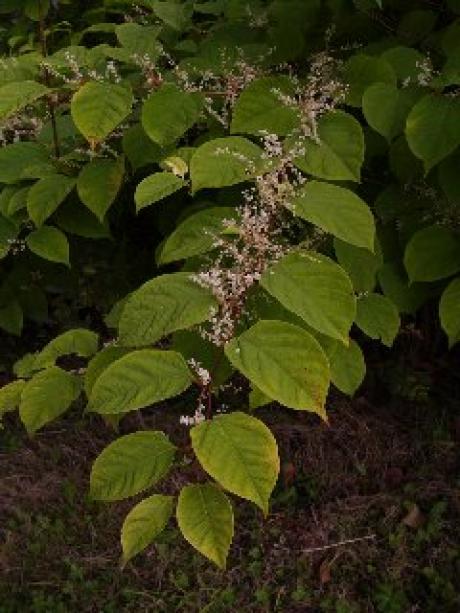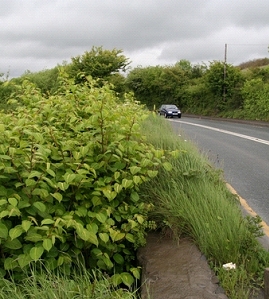Description
Growing to about 3 metres tall in dense cane-like clumps, this species has heart or shield shaped leaves, red and green speckled stems and tiny cream coloured flowers in late summer.
Japanese knotweed was introduced to gardens as a ground cover plant. It is now widely established in the countryside where it spreads from fragments of rhizomes or the plant itself, or as a result of moving contaminated soil. The plant is particularly easily spread along rivers and roads. The amount of infrastructure and building work in Ireland in recent years has probably increased its spread along roadsides, building sites and waste disposal sites.
Video guide to the identification of Japanese knotweed
Problems associated with this species include:
- Loss of biodiversity as native species are shaded out
- Increased erosion as it stops plant growth beneath it in the summer and dies back in winter leaving bare river banks open to erosion
- Infrastructure damage since it can grow through tarmac, walls, pipework and even concrete
- Expensive and time consuming to eradicate

